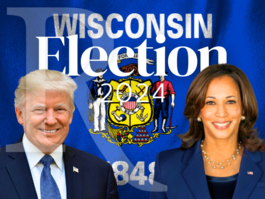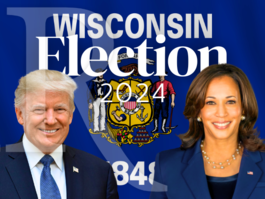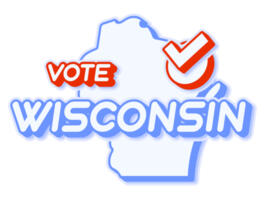What You Can Learn About Wisconsin Dispute from Differences in Poll Questions
An Analysis By Scott Rasmussen
In recent national polling about the situation in Wisconsin, Rasmussen Reports and Quinnipiac found a slight plurality in favor of Governor Scott Walker and his efforts, the Pew Center found a plurality opposed, and Gallup and the New York Times reported strong opposition.
Partisans and pundits quickly lined up to explain why the polls favoring their side were more reliable, and the others were biased, dishonest or both.
A better approach is to recognize that such differences are fairly common when new issues arise and the best way to approach the subject is to review all the data and learn from it.
For example, Quinnipiac found a 45% to 42% national plurality in favor of the governor by asking, “In order to reduce state budget deficits, would you support or oppose limiting collective bargaining for public employees?” On the other hand, Pew found a 42% to 31% national plurality opposed to the governor by asking, “From what you’ve read and heard about the dispute between Wisconsin’s governor and public employee unions over collective bargaining rights, do you side more with the governor or the public employee unions?”
Quinnipiac put the collective bargaining rights dispute in context as a potential way to reduce the state budget deficit. Pew described the entire issue as a collective bargaining dispute and never mentioned the state budget deficit. When the deficit is mentioned, the governor does much better; when it’s all about limiting collective bargaining rights, the unions do better.
This distinction was mirrored in a Rasmussen Reports statewide survey that found support for statewide budget cuts but not for weakening collective bargaining rights. A national Rasmussen Reports survey didn’t mention what the dispute was about and asked, “In the dispute between the governor and the union workers, do you agree more with the governor or the union for teachers and other state employees?” In that case, Walker most recently was favored 47% to 42%.
Nationally, the New York Times did not ask who people supported but found 60% opposition to “taking away some of the collective bargaining rights of the unions.” Gallup asked a similar question and found 61% opposed.
But both the New York Times and Quinnipiac found that nationally a plurality thought the debate was more about budget issues than about weakening unions. That’s one reason polls asking only about collective bargaining rights show better results for the unions. If the focus is on budget cutting, as it is for a plurality of adults nationwide, the results look better for the governor.
In Wisconsin, however, Walker has clearly been hurt by the ongoing debate. A recent Rasmussen Reports survey shows that just 43% of Wisconsin voters approve of the way he’s doing his job. That comes despite the fact that Wisconsin voters generally want the budget deficit eliminated by cutting spending. Clearly, within the state, voters are focusing on the collective bargaining rights as the key issue at the moment, and most are opposed to weakening such rights.
This suggests that the unions outmaneuvered Walker right from the start by conceding on all the economic issues but drawing a line in the sand over collective bargaining rights. By focusing only on the issue where the union was strongest, they put the governor in the weakest possible position.
There should have been no surprises to this strategy since the teacher’s union was explicit about their approach last August before Walker had even wrapped up the Republican gubernatorial nomination. At that time, both Walker and his ultimate Democratic opponent Tom Barrett proposed similar plans to reduce health care costs for local school districts. The plan would have switched many teachers from an insurance company created by the union to a plan that covered other state workers. In response, according to the Milwaukee Journal-Sentinel, a union official said, "Our members oppose taking away their rights to collective bargaining, so they would definitely raise their voices against it."
The lesson for the union was to read the polls and find its strongest position. The lesson for consumers of polls is to review all available data and learn from the differences in question wording. Each poll has something to add to the debate.
For those who are concerned that this is a unique situation or simply gamesmanship by different polling firms, it may be reassuring to note that the differences have happened before and will happen again. Back in September 2008, several firms polled on the bailouts proposed by the Bush administration. Rasmussen Reports initially found just 25% support for the bailouts, while some other firms found an overwhelmingly positive reaction to the same plan. Then, as now, there was something to learn by comparing all the data about what has become one of the most hated pieces of legislation in recent American history.
Rasmussen Reports is a media company specializing in the collection, publication and distribution of public opinion information.
We conduct public opinion polls on a variety of topics to inform our audience on events in the news and other topics of interest. To ensure editorial control and independence, we pay for the polls ourselves and generate revenue through the sale of subscriptions, sponsorships, and advertising. Nightly polling on politics, business and lifestyle topics provides the content to update the Rasmussen Reports web site many times each day. If it's in the news, it's in our polls. Additionally, the data drives a daily update newsletter and various media outlets across the country.
Some information, including the Rasmussen Reports daily Presidential Tracking Poll and commentaries are available for free to the general public. Subscriptions are available for $4.95 a month or 34.95 a year that provide subscribers with exclusive access to more than 20 stories per week on upcoming elections, consumer confidence, and issues that affect us all. For those who are really into the numbers, Platinum Members can review demographic crosstabs and a full history of our data.
To learn more about our methodology, click here.



